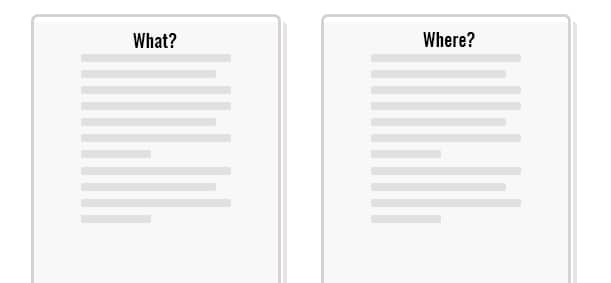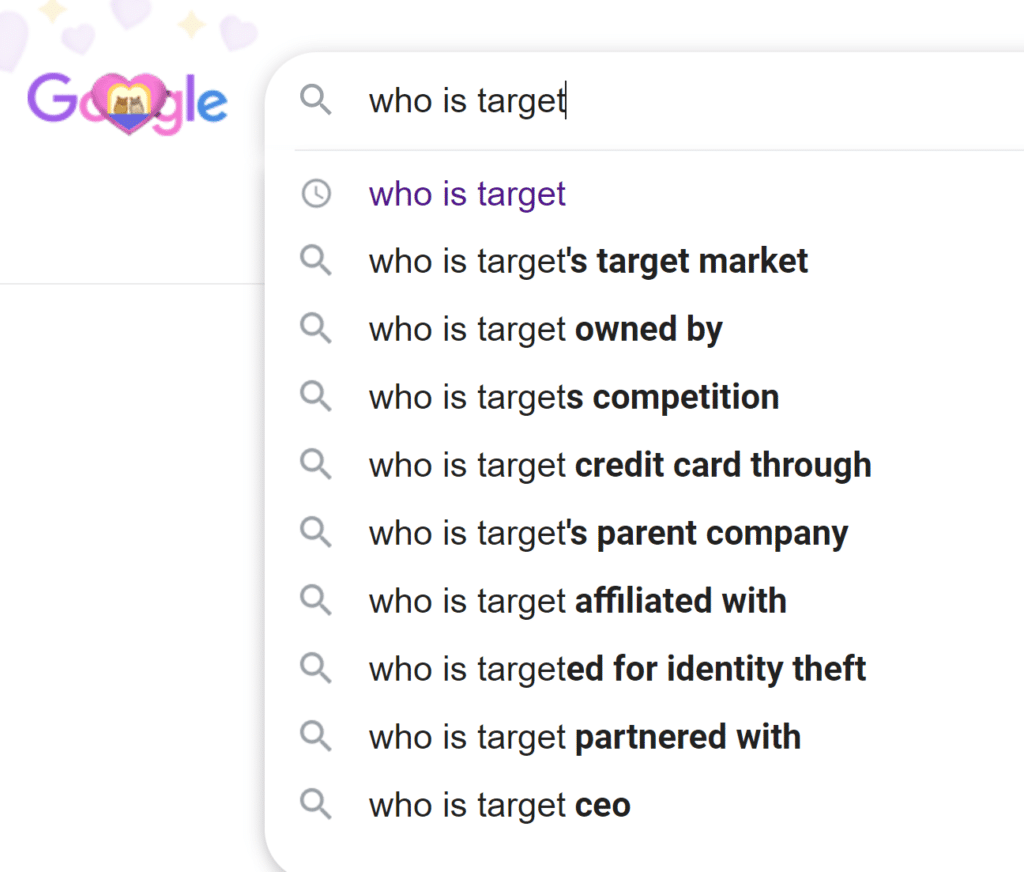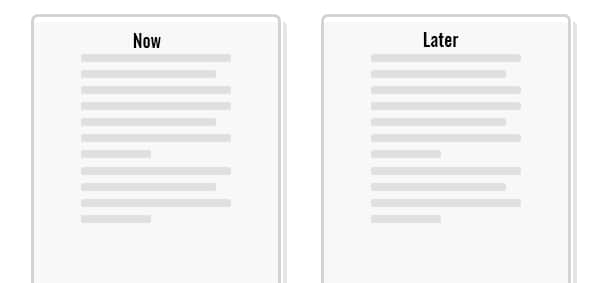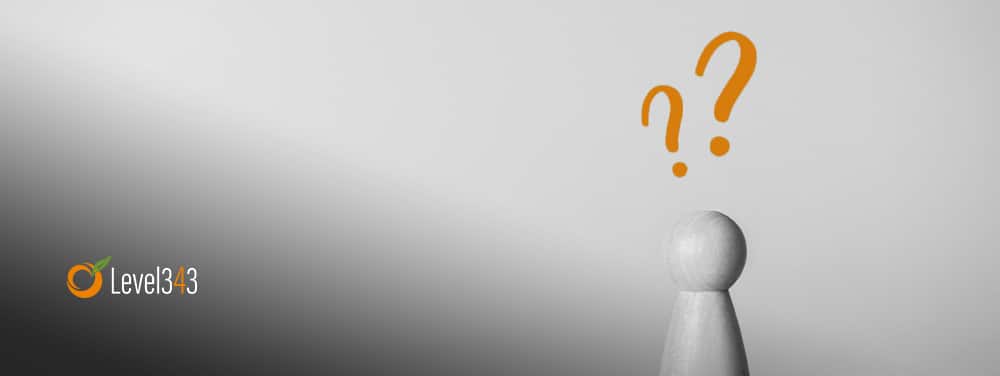Creating content strategies is a little like designing a mountain.
You know that stock photo picture of success, where some buff man or woman looks out over this beautiful landscape on top of a hill or mountain that was obviously hard to climb, and makes it look easy as pie to be there? You know they worked their butts off getting there, but they’re really enjoying that view.
When your visitor reads your content for information, your job is to make achieving their goal as easy as possible. You want to give them that feeling of accomplishment without all the sweat to get there. How do you do that? By creating content strategies that focus on what the visitor is looking for and why they’re looking for it.
Think of Your Site as a Huge Q&A Session
Any time a new visitor reaches your site, they have a question. They’ve come to your web page, blog post, video or infographic because they hope to find the answer to that question. That question might be, “Who is this company and what do they stand for,” or it might be, “How do I do this?” There are many possibilities, and your site should aim to answer them all.
A Guide to Creating Content Strategies
This is where the brainstorming comes in, and the research, and the content strategy, and the editorial calendar and, finally, the content creation
1. Brainstorming Ideas
For some people, brainstorming is the easiest part. You just grab a pencil and a piece of paper, then write down as many ideas to write about as come to mind. For others, it’s like pulling teeth. Your mind isn’t giving you anything, no way, no how. However, this brainstorming method has worked for people of both sides and everything in between.
Solving for 5W1H of Journalism
5W1H of Journalism (AKA the 6Ws) is the “Who, What, When, Where, Why and How” questions that every good journalistic piece is supposed to be able to answer. These are the basic questions for any information-gathering. Since we’re trying to be as informative as we can be, we’re going to follow the same path.
Take 6 pieces of paper and at the top of each, write one of the 6 words. For example, “What” on the first piece of paper, “Who” on the second, and so on. By the time you’re done, each of the 6Ws should have its own sheet of paper.
The purpose of this exercise is to find gaps in our current content. So, we’re creating a content strategy that focuses on information we already have on our site and what’s missing.
Take one piece of paper (it doesn’t matter which you do first) and start writing down any questions that come to mind about your company, product, brand, website, social accounts or anything else. The only thing is, that question has to start with the “W” that is on the page.

So, for example, if I start with the “Who” page, I might write, “Who is Level343?”
Here are a few generic questions to start you off:
Who
- Who is (your business name)?
- Who is (a member of your business team)?
- Who is (one of the authors on your blog)?
What
- What is the name of the owner?
- What is the shipping policy for ordering online?
- What does (industry term) mean?
When
- When does your company open?
- When does my warranty expire for (a product or set of products you sell)?
- When is it best to use your product?
Where
- Where is the brick and mortar business located?
- Where can I use your product?
- Where can I go to get ahold of your customer service people?
Why
- Why doesn’t your product work like it’s supposed to?
- Why should I buy your product and services?
- Why do people speak negatively about your industry? (we’ve answered that one a lot!)
How
- How do I keep your product clean?
- How does your product work?
- How can I best use your product?
Once you’ve written down as many questions as you can think of for each one, move on to the next step.
2. The Research

Once you have your questions, it’s time to go talk to Google. You could also use BuzzSumo, SEMRush or similar tools. We want to find out what the search engine comes up with when we start entering our questions.
For example, start typing in, “Who is Target?” By the time you get to the last “t”, several suggestions have popped up. If any of these questions apply to you or your company, add them to the associated paper.
In the example here, we have several additional questions:
- Who is your company owned by?
- Who is your company’s CEO?
- Who are you collaborating with?
- Who is your target market?

Next, choose two more pieces of paper (blank). On one, write “Now” and on the other write “Later”.
Now go to your site. Using your search function, start asking these questions and see what you come up with. If the results are satisfactory for a question, and you feel like your site amply answers it, write the question on the “Later” piece of paper. If the results are unsatisfactory, write the question on the “Now” piece of paper.
As you put each question into either the “Now” or “Later” sections, cross them off of the original page. This helps lessen redundancy.
3. Creating the Content Framework

So now you should have only two pieces of paper: Now and Later. Put “Later” aside for now – don’t get rid of it, just put it somewhere safe. Type it up and save it on the computer or something equally modern. Step away from the pencil for awhile.
You’ve now taken all your questions and narrowed them down to the single list in your hand. Now what?
Split them one more time, into questions that can be answered by posts, versus questions that need to be answered by a web page.
Time to prioritize each list.
If it’s really important, put a number 1 next to it. If it’s not important, put a 3, and if you can’t decide which it is, put a number 2.
Now take all the “1”s and put them in an order that makes sense. Do the same with the 2s and 3s. Only you know which ones should go before the others. As you finish, you should have a pretty streamlined list of topics you need to cover immediately.
As you went through the questions, did any ideas pop up on how you might answer these questions? Don’t think in just posts; there are several forms of media you can answer a question. Consider what you are capable of regularly doing in terms of content. You have to be willing to make a commitment to yourself, your business and your content strategy, so make it achievable.
For example, can you fit in four blogs a month? Can you fit an infographic a month in? How about an ebook every three months and a video every six?
What content are you willing – and capable – of putting out? Write down an achievable goal. For example:
- 4 blogs per month, 1 blog will have an infographic attached
- 2 pages per month
- 1 ebook every three months
- 1 video every six months to a year
Congratulations! You’re almost done!
4. Scheduling Out the Editorial Calendar
When creating content strategies for a specific purpose, it helps to post when your target audience expects you to be there. Setting up an editorial calendar can help make sure you don’t publish one post on top of another.
This part is fairly quick (comparatively). Here, you take out your favorite calendar app. Decide which days you’re going to post on. For example, we post on Mondays and Fridays. You can choose whichever day you think you’ll be able to keep.
Next, add the questions into each day you’re posting on. So, for example, the very top question would go in the first Monday, the second question in the second Monday, and so on. Keep going until all your questions are used up. This could very well take you into the next six months.
Additionally, decide where you might best fit in an infographic. Which post of the month is best for that? Make a little mark in your calendar that sets that post apart from the others.
Then, decide which two pages per month you want to work on; choose a due date. For example, those two pages are due to be completed by the 22nd of every month.
Every three months, make a notation that an ebook is due.
Every six months, make a notation that a video is due.
Woot! The editorial calendar is done!
5. Creating the Content
It’s time to join the conversation again – only now you’re armed with something your visitors really care about. Information.
As you go to answer each question, imagine that the visitor came directly to you.
George, first time visitor to your site: “Say, John of www.yourwebdesignurlhere.com – I heard you have mad web design skills. Congrats on that. So, how would you go about picking what colors you want in your website?”
Aha – your first question. Title? “How Do I Choose My Website Colors?”
John, owner of www.yourwebdesignurlhere.com: “Well, George – thanks for the compliment -, there are lots of ways to choose colors, I can run over a few of them for you, but my personal favorite is a tri-color wheel. I like the tri-color wheel because it keeps the colors simple.”
George: “Really! Tell me more…”
Contact initiated. Information obtained. “Knowledgeable” badge achieved. George comes back for more information; John obliges. George and John become business BFFs. George eventually hires John because, wouldn’t you know it, this website design stuff is harder than it looks.
It’s a beautiful thing.
Content Creation Should Be About the Audience – Always
Now, the process above has been extremely streamlined to give you a basic outline to follow. Don’t be surprised if more ideas come to mind. Don’t be surprised if you come up with better ways that work for you.
However you go about creating your content strategy, and however you reach out to your audience, remember that any content you create should be about – and for – them. Content is not a chance for you to toot your own horn (unless it’s a press release or “company news” type post). It’s not an opportunity to write about what interests you (unless it just happens to coincide with your visitors).
Content creation is about what your audience wants to know about you, your product, your services, and what they can do with it to better their lives, business, products, etc.
The bonus is, on the way, your life and business also get better. Contact us today it’s a Win-win!



































